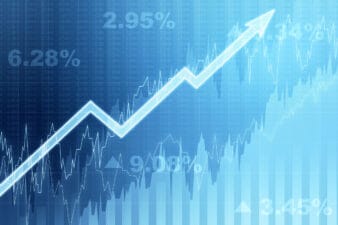Shopify (TSX:SHOP)(NYSE:SHOP) has become the highest-valued stock on the TSX. But a market cap of $120 billion for a company that has been reporting losses is not sustainable. NASDAQ’s $1 trillion valuation companies — Alphabet, Amazon, and Apple — reached that level on the back of sustainable fundamentals. In the case of Shopify, it seems like investors are panic buying amid the pandemic.
Why did Shopify stock rally in April and early May?
Shopify stock doubled in a span of 35 days (from April 2 to May 7). But this stock rally is driven by sentiments and not by fundamentals. The market is fearful, as the COVID-19 pandemic has temporarily shut down many businesses, including airlines, restaurants, oil, and real estate. This left investors with few attractive investments like retail, utilities, e-commerce, and software.
In the case of Shopify, investors became greedy, as many observers believed that the pandemic would put the e-commerce industry 10 years into the future. They priced in the next 10 years of growth, which inflated the stock price. The stock is trading at 69 times its sales, which is way above its rival Square’s valuation of 6.4. When the coronavirus bubble bursts, Shopify stock will drop significantly.
Shopify is at the peak of the coronavirus bubble
The current COVID-19 pandemic has created an ideal market environment for e-commerce business. The pandemic-driven lockdown encouraged consumers and retailers to go online. All major e-commerce stocks rallied in April and early May; Shopify stock rallied 100%, surpassing Amazon’s and Square’s rally of 23% and 63%, respectively. However, Shopify’s rally is not backed by fundamentals.
In the first quarter, Shopify’s revenue rose 47% YoY (year over year) to $470 million, driven by 57% growth in merchant solutions and 34% growth in subscription solutions. These growth figures are similar to what the company reported in the last four quarters.
The true growth for Shopify will come when more merchants, especially large enterprises, subscribe to its platform. Between March 13 and April 24, it saw a 62% surge in new stores, as the company extended its free trial from 14 days to 90 days. It is unclear how many of these new stores will churn into long-term paid subscriptions. Food and grocery giants like Heinz, Lindt, Loblaw, and Farm Boy subscribed to the Shopify platform. At the same time, many companies cancelled or downgraded their subscriptions.
What got investors excited was the “Black Friday-level traffic” in April, as Shopify CTO Jean-Michel Lemieux describes it. Higher traffic converts into gross merchandise volume when consumers shop. The company earns 60% of its revenue from merchant solutions. Hence, its sales depend heavily on consumer spending.
Uncertainty creeps in the second quarter
April was probably the peak of the coronavirus bubble for Shopify. As the lockdown eases, and the economy enters a recession, the company’s growth will depend on how fast merchants switch to online stores, and how rising unemployment changes consumers’ online and offline spending.
| Shopify’s YoY Growth | Q1 2019 | Q2 2019 | Q3 2019 | Q4 2019 | Q1 2020 |
| Revenue | 49.5% | 47.8% | 44.6% | 46.9% | 46.7% |
| Cost of Sales | 54.9% | 45.6% | 44.5% | 52.6% | 52.0% |
Software companies generally trade at large sales multiple as their low overhead cost helps them turn profitable once the software is complete. But Shopify’s costs are rising faster than its revenue because of its growing mix of merchant services like lending, payments, and shipments. The company has increased lending to small- and medium-sized businesses that are struggling amid the COVID-19 crisis. If these businesses default in a recession, it could hurt Shopify’s future cash flows.
Foolish takeaway
Wall Street analysts at Wells Fargo and DA Davidson have downgraded Shopify stock, as they see limited upside potential. Anyone who invested $1,000 in Shopify at the start of April has already doubled its earnings. April’s rally of e-commerce stocks is easing. When the coronavirus bubble bursts, Shopify stock could drop significantly. The stock may not return to the $1,000 price for many years.
Some hedge funds have sold their positions in Shopify. Now is the right time to sell the stock and cash in the profit before the market corrects its valuation.







